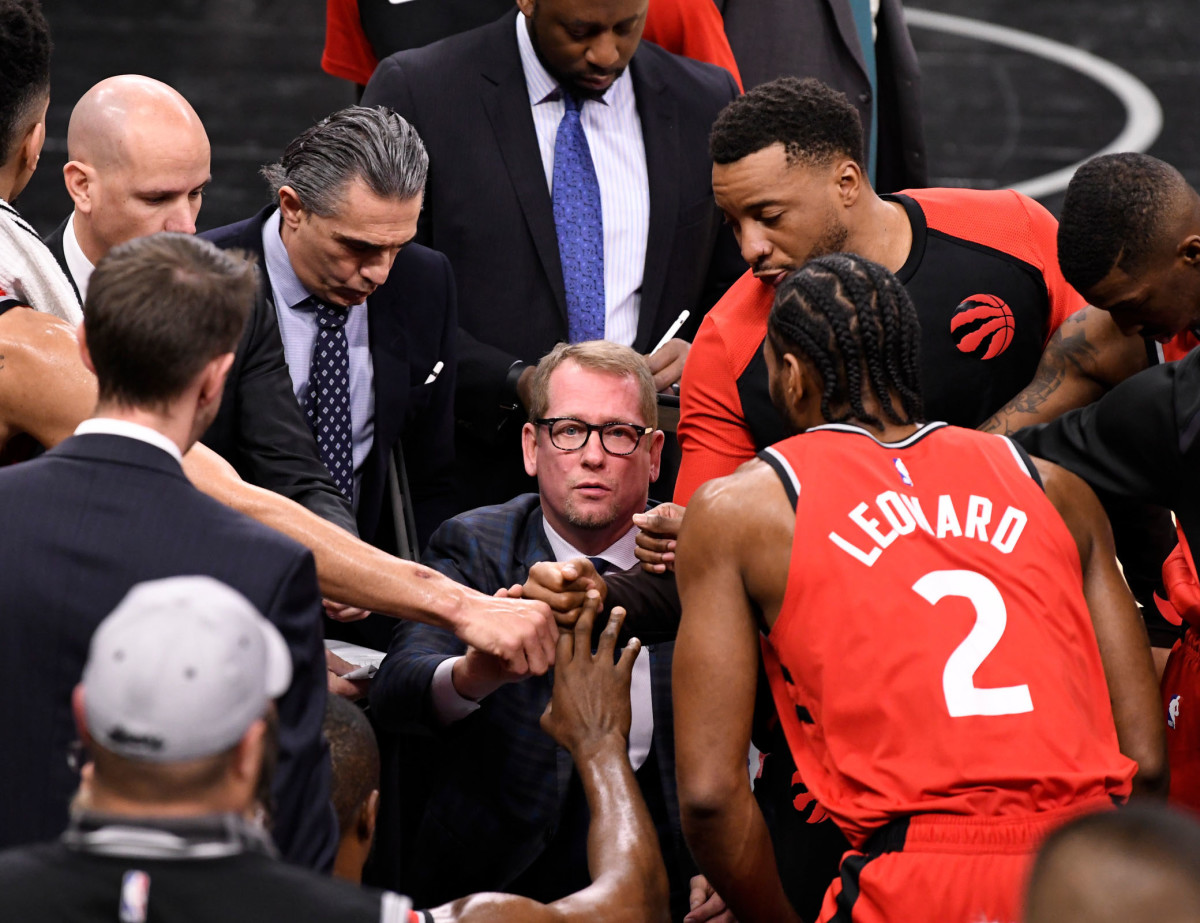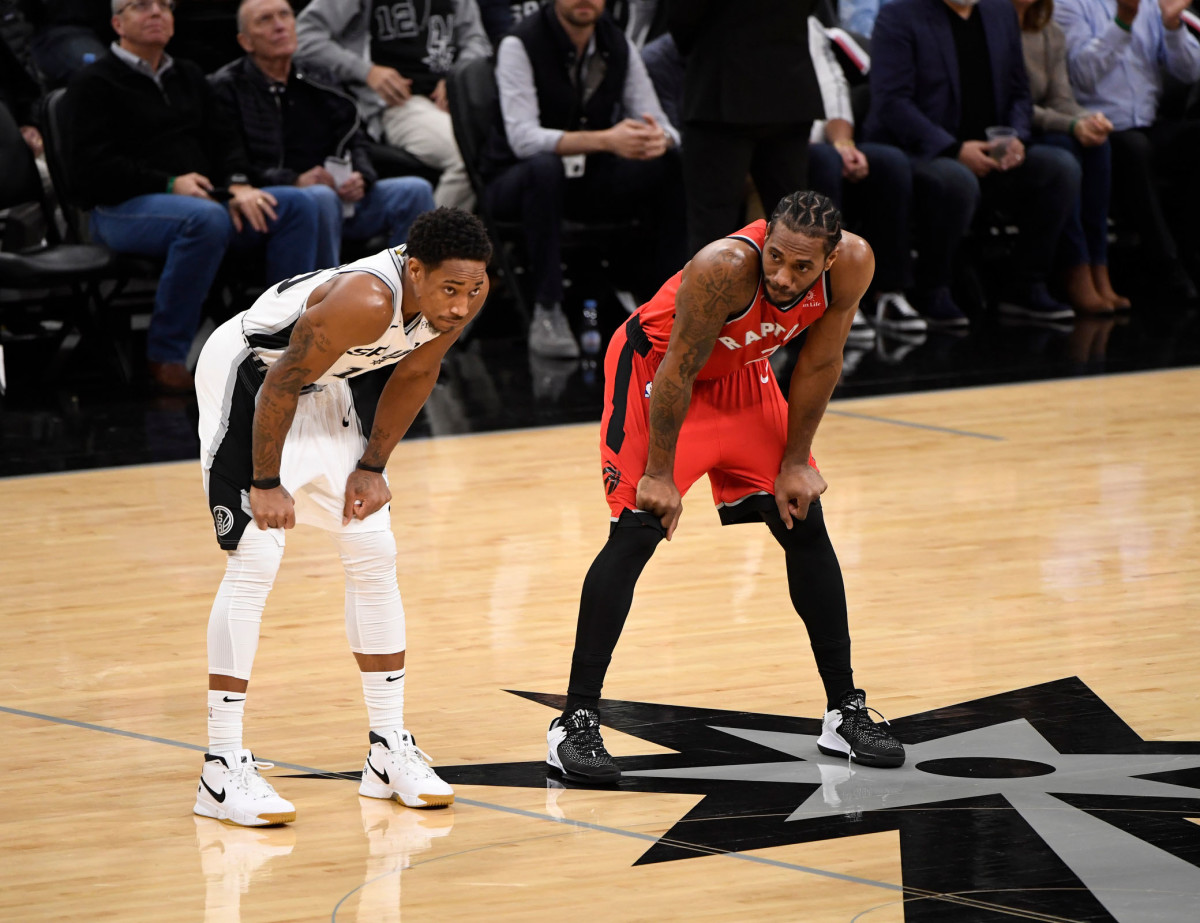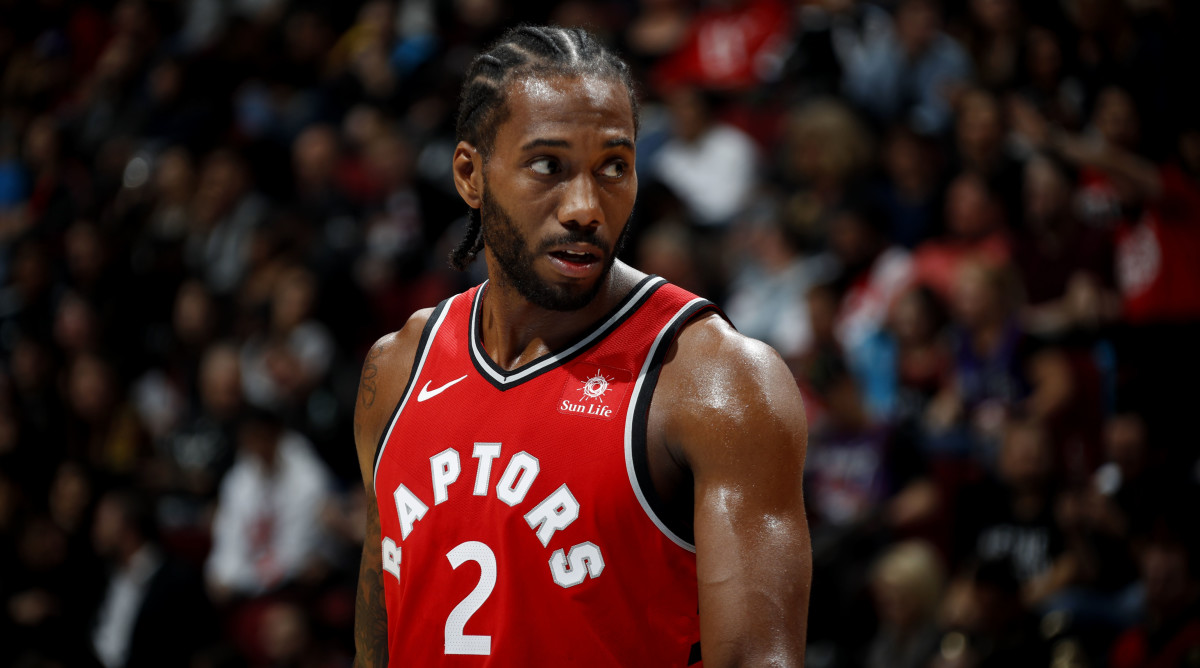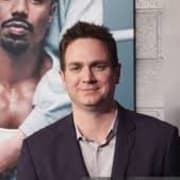Courting Kawhi: Can the Raptors Sell Their Star on a Future in Toronto?

This story appears in the January 14, 2019, issue of Sports Illustrated. For more great storytelling and in-depth analysis, subscribe to the magazine—and get up to 94% off the cover price. Click here for more.
What do you know?
These days any conversation with NBA personnel about Kawhi Leonard, a crown jewel in a star-studded 2019 free-agent class, invariably begins with that question—which, since no one knows anything, raises countless more. Does he like Toronto? Last summer, the Raptors, fresh off another too-early postseason exit, ripped up the core of a 59-win team, trading All-Star guard DeMar DeRozan, center Jakob Poeltl and a first-round pick to the Spurs for Leonard and guard Danny Green. Since then, every move Leonard makes has been scrutinized, every facial expression (he laughed at media day—he loves Toronto!) interpreted. Green’s credentials include a championship and an All-Defensive nod in 2017. This season, he’s added another: Kawhi whisperer. “I get it from everyone in the organization,” says Green, Leonard’s teammate for seven seasons in San Antonio. “It’s ‘How’s Kawhi, does he like it here?’ Man, I don’t f------ know. You have to ask him if he likes it. I think he likes it. But you have to ask him.”
What about Los Angeles? Some 2,200 miles west, armed with cap space and balmy weather, lie the Raptors’ top competitors for Leonard’s services. The Lakers have LeBron James, Magic Johnson and an organization steeped in success. The Clippers can offer the SoCal native the keys to his own L.A. franchise.
Power Rankings: DeRozan, Popovich Right Ship in San Antonio
And Toronto? The Raptors can’t match the Lakers’ history or compete with sun-kissed California shores. But what they have is a head start—one year to sell Leonard on the future of the franchise, to bond him to a veteran starting lineup and a promising young bench. Toronto is off to a 30–12 start, with Leonard enjoying his best statistical season (27.2 points, 7.9 boards per game). James has gone west, and suddenly the East is wide open. The Raptors have the opportunity to add “conference champs” to the list of reasons Leonard has to stay.
Would that be enough?
It’s mid-December, and Raptors president Masai Ujiri is leaning back on a folding chair in Toronto’s practice facility, his GM, Bobby Webster, beside him as their new franchise player runs through drills on the floor. Webster had been the one to kick-start negotiations with the Spurs, and Ujiri had been itching to shake up the roster, even before Leonard became available. (Last season, he approached the Thunder about a Paul George-for-DeRozan swap.) Since Ujiri took over basketball operations in 2013, the Raptors have been consistently good, never sinking below 48 victories. But they never felt great. “I have a mandate . . . to win a championship,” says Ujiri. “You can’t continue doing the same thing over and over again. We gave a chance to [that] team. We tried to build it as much as we can.”
Enter Leonard, a 27-year-old forward coming off an injury-riddled season that fractured his relationship with the Spurs. For weeks this summer, Ujiri and his staff held meetings about Leonard, dissecting everything from his health (the Raptors had limited information about the status of the right-quad injury that cost Leonard all but nine games last season, and this wasn’t a deal they could just undo if Leonard failed a physical) to the risk/reward of giving up the franchise’s all-time leading scorer for a player who could walk at the end of the season. People who could offer any real insight into Leonard were hard to come by. “We got as much information as we could,” says Webster, “and we made a decision.”

Nick Nurse was still processing his first NBA head coaching opportunity when Leonard landed in his lap. Ujiri, who was raised in Nigeria, and Nurse, who comes from Iowa, have different backgrounds but similarly circuitous journeys. In 2003, Magic GM John Gabriel, impressed by the 31-year-old who made NBA contacts by hustling between Final Fours and offseason camps, hired Ujiri as a scout, launching his rapid ascent to Toronto’s top job. Nurse’s coaching career has spanned four decades and four countries, with gigs in the G-League and Europe, before settling in as Dwane Casey’s assistant in 2013. When the Cavs swept Toronto in the Eastern semis last season, Casey was fired and Nurse replaced him.
The best player Nurse coached before Leonard? “Probably Tony Dorsey,” Nurse says with a laugh, referring to the 2000 British Basketball League MVP. Days after the trade an admittedly nervous Nurse sat with Leonard, whose stolidity is legendary. “I just remember thinking, What if he doesn’t say anything?” says Nurse. He asked Leonard if he had any questions. Within minutes, they were at the white board, drawing up plays. “He wanted to know how I was going to use him,” says Nurse. “And I said, ‘Everywhere, man. In the post, playing screen-and-roll, bringing it up after rebounds. All of the above, because you can do all of the above.’ ”
There’s an unorthodoxy to Nurse’s coaching, a mad scientist vibe. It’s what attracted Raptors brass. He isn’t wedded to traditional lineups. He loves the three-point shot, from anyone, anywhere. He installed 6'9" Pascal Siakam in a point-forward role, where he has more than doubled his scoring average to 15.0 points per game. Nurse didn’t just make the 6'7" Leonard the focal point of Toronto’s offense; he also made him a defensive weapon. “I was watching film and saw him guarding [Nuggets center] Nikola Jokic´,” says Pacers coach Nate McMillan, laughing. “He has so much versatility.”
MANNIX: Taylor Deserves Just as Much Blame as Thibodeau
Nurse is cautious when characterizing his relationship with Leonard. “It’s professional,” says Nurse. “I think he knows that I respect him and I’m trying really hard to help him. I think we align pretty good. And he’s a joy to coach. There’s just been no uncomfortable moments coaching the guy.” Asked about Leonard’s pending free agency, Nurse pauses. “Us having a good team, a successful team and him being a super critical part of that, that’s all we can do.”
It’s an obvious comparison: In July 2017, the Thunder rolled the dice and traded for George, who had a year left on his Pacers contract and had made it known that the Lakers were his preferred destination. Fast-forward to July 1, 2018, and there was George, alongside star point guard Russell Westbrook, onstage at a hastily arranged party in Oklahoma City, announcing his intention to re-sign for four years and $137 million.
Privately, Raptors officials admit OKC’s success at retaining George emboldened them—while also creating a blueprint. Thunder executives are quick to point to George’s bond with Westbrook as the most significant factor in his decision to stay. The Raptors’ Westbrook is Kyle Lowry, the four-time All-Star point guard who is in his seventh season in Toronto. But while Westbrook—who felt the sting of Kevin Durant’s defection in 2016 and absorbed a first-round defeat in ’17—embraced the role of recruiter, Lowry has been more reluctant.

Last week, during the second half of Toronto’s win over Utah, Lowry settled into a charcoal couch in the Raptors’ locker room, the game playing on a flat screen in front of him. A back injury has kept him out of the lineup since Dec. 22, but it has afforded him the opportunity to study Leonard in action. “Kawhi is an unbelievable basketball player,” says Lowry. “He just does him. There are a lot of things he can do talent-wise where you’re just like wow.”
Lowry says he and Leonard have become friendly. The two swapped texts after the trade but didn’t connect in person until training camp. “He was working on his game, I was working on my game,” says Lowry. “When the time is right, you’ll get together, get to talk, say what’s up. I do my thing in the summertime.”
Lowry sees the potential in this team. “But the potential always excited me, even years before,” says Lowry. “We just ran into number 23 in Cleveland.” Indeed, for Lowry, the scars created by the loss of DeRozan, a teammate for six seasons—the last three of which ended with losses to James’s Cavaliers—and a close friend, linger. He has a frosty relationship with Ujiri, and he will never concede that the team is better after the swap. He enjoys playing with Leonard and says he just wants his teammate to be happy wherever he plays—wherever that may be. Asked how he reconciles the possibility of Leonard’s being happy elsewhere with his own happiness, Lowry says, “I’m going to be happy no matter what. I’ve got a great job, two kids, family. I play in the NBA. I’m going to be happy in general, period. There’s no happier for me.”
Ujiri maintains a regular dialogue with Leonard, as well as his agent, Mitch Frankel, and his uncle Dennis Robertson, a father figure who plays an active role in his career. But Ujiri hopes his actions will speak louder. The Thunder believed their willingness to be bold with George, to surrender top young talent (Victor Oladipo, Domantas Sabonis) with no guarantee that George would stay, resonated with him. They believed how they handled adversity during an uneven first season made an impression on him. And it did. “It just felt like everyone was always on the same page,” says George. “From the 15th guys on the roster, to the coaching staff, to the GM. There was one goal, and everyone is helping the man next to him get to that one goal. When you’ve got that, it makes the job easier. It made coming to work every day fun.”
Toronto knows what it’s up against. James could have significant pull. The Clippers have sent team officials—from president Lawrence Frank on down—to Raptors games, as if the sight of a Clippers polo in January will have an impact on Leonard’s decision in July. Earlier this month the NBA, responding to outrage at James’s public pining for Pelicans star Anthony Davis, fired off a memo to all 30 teams, reminding them of anti-tampering rules. It included a note that “social courtesies” could be interpreted as tampering “if they are . . . intentional . . . repeated, and/or done for the purpose of conveying interest in the player while he is under contract with another team.” Several teams, including Toronto, took that as a message to the Clippers.
The Raptors are trying to avoid reading tea leaves. They know Leonard cares about results. Last month Nurse called Leonard into his office. He planned to talk about Leonard’s minutes and apologize for not using him more in mismatch situations. Leonard cut him off. Don’t worry about it, Leonard told Nurse. I just want to win. Toronto offers that. Lowry is steady. Serge Ibaka is undergoing a renaissance in his role as a small-ball center, averaging a career-best 16.2 points and shooting above 50% for the first time in five years. Siakam, 24, is an überathlete whose three-point shooting has jumped from 14.3% two years ago to 35.6%. Fred VanVleet has capably filled in for Lowry.

But there are things the Raptors can’t know and most likely won’t until July:
How much does money matter? Toronto will eagerly offer Leonard a five-year, max-level extension worth around $190 million on July 1—or any other deal Leonard is interested in. The Raptors don’t see it as a risk. Alex McKechnie, Toronto’s director of sports science, hailed for his work keeping Shaquille O’Neal healthy during his years with the Lakers, has given Leonard a clean bill of health. There were whispers last year that Leonard could have played through the pain—whispers amplified by then Spurs star Tony Parker’s remarking that his own quad injury was “100 times worse” than Leonard’s.
“He was injured,” says Green of Leonard. “Being injured has nothing to do with quitting. Quitting is if you are healthy and you sit out. He was hurt, and everyone in the San Antonio organization knew that.”
Does climate matter? Leonard was Riverside-born, San Diego State–bred before settling in San Antonio in 2011. Leonard’s closest friend in Toronto is Jeremy Castleberry, a former high school and college teammate who broke into NBA coaching with the Spurs and was hired by Toronto last summer as a player-development coach. Castleberry has a saying for how Leonard deals with the bitter Canadian winter: garage to garage.
SHARP: The Warriors Look Mortal, But What Does That Mean?
Does the market matter? Toronto isn’t L.A., but it’s far from a small town. It’s the NBA’s fourth-biggest media market, and the fan base is rabid—203 consecutive sellouts and counting. Leonard, who has a two-year-old daughter, says he cares about his brand: “When you have kids, you start thinking about what you can leave for them in the future.” But he does little to promote it. He has no official Instagram account. His Twitter account has been dormant since 2015. When ESPN came to town for an all-access week last month, Leonard blew them off. He rarely does extended interviews, and his daily interaction with local media usually lasts a couple of minutes. He has a sneaker deal with New Balance.
Inside the locker room, Leonard’s free agency is rarely discussed, even if everyone is wary of the consequences. “We need him to stay,” says Ibaka. “He keeps everybody safe—no one is safe if he leaves.” Ibaka has been one of Leonard’s strongest new connections. In Leonard, Ibaka sees shades of Westbrook and Kevin Durant, his former teammates in Oklahoma City. “They have a similar mind-set, where if they want to do something, they know they can.” In San Antonio, Leonard was known as the Claw. In Toronto, Ibaka has tried to make Deadly Zombie (self-explanatory) and Cape Town (the city in South Africa) stick. “I don’t know why, but he keeps telling me he’s from Cape Town,” says Ibaka, who was born in Congo. “Of all the places. . . . Maybe he just wants to visit there someday.”
From his locker a few stalls over, Leonard looks up. “You hating on me, Serge?” Leonard asks, smiling.
Ibaka grins back. “No, man,” he says. “We need you to stay. Stay, Kawhi. Stayyyyyy.”
Leonard chuckles, then shuffles off. A smile and a laugh? Now that’s something the Raptors can get excited about.
